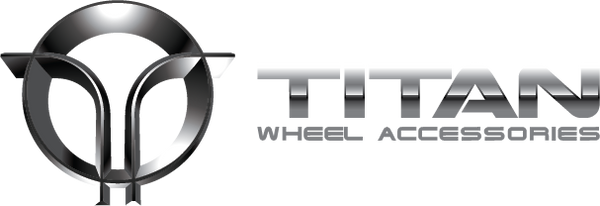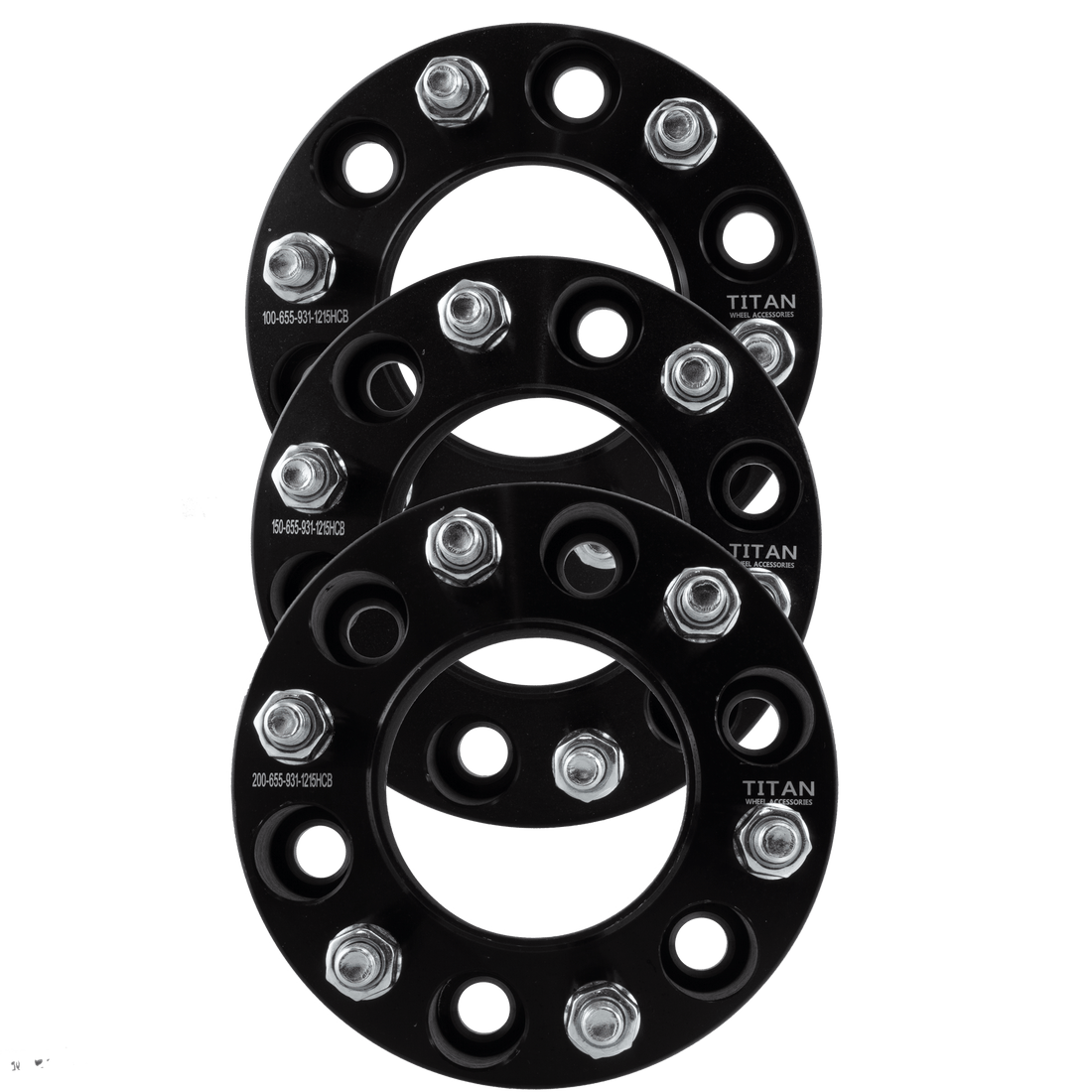Are you considering using wheel spacers to create additional space between the wheels and hubs of your vehicle? Before making a decision, it's important to understand the difference between hubcentric and lugcentric wheel spacers.
Hubcentric spacers are specifically designed for your vehicle and wheel combination, ensuring a secure and centered fit. They have a hub bore that matches your vehicle's hub and a hubcentric lip that matches the size of your stock wheel, reducing vibrations and ensuring proper alignment.
On the other hand, lugcentric spacers have a more versatile design with a larger hub bore and no protruding lip. This allows them to fit a wider range of vehicles and wheels. When installed correctly, both types can be used safely without causing vibrations.
In this article, we will explore the key differences between these two types of wheel spacers, including installation methods, compatibility considerations, vibration reduction capabilities, as well as safety precautions when torquing them in place.
Key Takeaways
- Hubcentric spacers have a matching hub bore and a hubcentric lip, providing a secure and centered fit, reducing vibrations.
- Lugcentric spacers have a larger hub bore and no protruding lip, offering a more versatile design but may require additional adjustments.
- Proper installation and torque are crucial to prevent issues like broken studs and vibrations.
- Safety should be prioritized with alignment, torque, and regular inspection, and seeking professional assistance is recommended if unsure.
Hub Bore and Lip Design
Now that we understand the basics of hubcentric and lugcentric wheel spacers, let's delve deeper into their differences by examining the crucial aspects of hub bore and lip design.
Hubcentric wheel spacers have a hub bore that matches the vehicle's hub, ensuring a snug fit. Additionally, they provide a hubcentric lip of the same size for the wheel to slide over, which centers the wheel and minimizes vibrations.
On the other hand, lugcentric wheel spacers have a larger hub bore than the vehicle's hub and lack a protruding lip. This design allows them to fit more vehicles and wheels.
To ensure safe installation without vibrations, it is essential to install and torque lugcentric spacers correctly.
Moving onto installation and compatibility...
Installation and Compatibility
Ensure a secure fit and eliminate vibrations by correctly installing and torquing the spacers on your vehicle's hub. When installing lugcentric wheel spacers, make sure that they align properly with the wheel studs and are centered before tightening them down.
Use a torque wrench to tighten the lug nuts to the recommended specifications provided by the manufacturer. This will help prevent any potential issues such as loosening or over-tightening of the spacers, which can lead to vibrations while driving.
It's also important to ensure that the lugcentric spacers are compatible with both your vehicle's hub size and the wheels you intend to use them with. By following these installation guidelines, you can safely enjoy the benefits of using lugcentric wheel spacers without experiencing any disturbances on the road.
Next, let's discuss how both hubcentric and lugcentric wheel spacers contribute to reducing vibrations during driving.
Vibration Reduction
By correctly installing and torquing the spacers, you can experience smoother rides with reduced vibrations. Hubcentric wheel spacers play a crucial role in vibration reduction due to their design.
The hubcentric lip of these spacers ensures that the wheels are centered on the vehicle's hub, eliminating any wobbling or imbalance that could cause vibrations. This snug fit between the spacer and hub provides a stable connection, resulting in a more comfortable driving experience.
On the other hand, lugcentric wheel spacers may not offer the same level of vibration reduction as they lack this hubcentric lip. However, proper installation and torque can still minimize vibrations.
Now that you understand how vibration reduction is achieved through hubcentric wheel spacers, let's move on to discussing their compatibility with different vehicles and wheels.
Vehicle and Wheel Fitment
To ensure a proper fit for your vehicle and wheels, it's important to consider compatibility when selecting the appropriate spacers. Hubcentric wheel spacers are designed with a hub bore that matches the hub on your vehicle, ensuring a precise fit. This means they'll center the wheel perfectly, reducing the chance of vibrations.
Hubcentric spacers also provide a hubcentric lip of the same size for your stock wheels to slide over, further enhancing stability and reducing vibrations.
On the other hand, lugcentric wheel spacers have a larger hub bore than your vehicle's hub, allowing them to fit a wider range of vehicles and wheels. While they may not offer the same level of precision as hubcentric spacers, they can still be installed safely and without vibrations by ensuring correct installation and torquing.
By understanding these differences in vehicle and wheel fitment, you can choose the right type of spacer for your specific needs.
Moving forward into the next section about safety and torquing...
Safety and Torqueing
When it comes to installing wheel spacers, it's crucial to prioritize safety and proper torquing techniques. Here are four key points to keep in mind:
- Ensure Correct Installation: Before installing wheel spacers, make sure that they're aligned properly with the vehicle's hub. This will help prevent any wobbling or vibrations while driving.
- Use Recommended Torque Specs: Always refer to the manufacturer's guidelines for the recommended torque specifications when tightening the lug nuts. Over-tightening can lead to damage or breakage, while under-tightening can cause the wheel spacers to come loose.
- Regularly Inspect for Wear and Tear: It's important to periodically inspect both hubcentric and lugcentric wheel spacers for any signs of wear or damage. This includes checking for cracks, warping, or uneven wear patterns on the spacer surface.
- Seek Professional Assistance if Unsure: If you're unsure about how to properly install or torque your wheel spacers, it's always best to seek assistance from a professional mechanic who has experience with this type of work.
Remember, prioritizing safety and following proper torqueing techniques will ensure a smooth and secure ride with your wheel spacers installed correctly.
Frequently Asked Questions
How do hubcentric wheel spacers improve vehicle performance?
Hubcentric wheel spacers improve vehicle performance by providing a secure fit between the hub and wheel, reducing vibrations. They center the wheel properly, improving stability and handling. This ensures a smooth and comfortable ride for the driver.
Can lugcentric wheel spacers be used on any vehicle?
Lugcentric wheel spacers can be used on a wide range of vehicles because they have a larger hub bore and a flat face. However, it is important to install and torque them correctly to ensure safe and vibration-free operation.
Are hubcentric wheel spacers more expensive than lugcentric ones?
No, hubcentric wheel spacers are not necessarily more expensive than lugcentric ones. The cost of wheel spacers depends on various factors such as brand, material, size, and design, rather than the type of spacer.
What are the potential risks of using lugcentric wheel spacers on a vehicle?
Using lugcentric wheel spacers on a vehicle can pose potential risks. Without a hubcentric lip to center the wheel, there is an increased chance of vibrations and imbalance, leading to reduced stability and safety.
How do I determine the correct torque specifications for installing wheel spacers?
To determine the correct torque specifications for installing wheel spacers, consult the vehicle's owner manual or contact the manufacturer. They will provide the necessary information to ensure proper installation and avoid damage or safety issues.
Conclusion
In conclusion, the difference between hubcentric and lugcentric wheel spacers lies in their design and functionality. Hubcentric spacers are specifically designed for a particular vehicle and wheel combination, providing a secure and centered fit. They have a hub bore that matches the hub of the vehicle and a hubcentric lip for proper alignment.
On the other hand, lugcentric spacers have a more versatile design, fitting a wider range of vehicles and wheels with their larger hub bore and flat face. Both types of spacers can be used safely when installed correctly.

